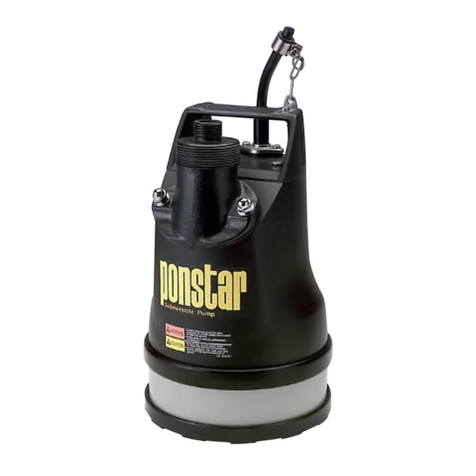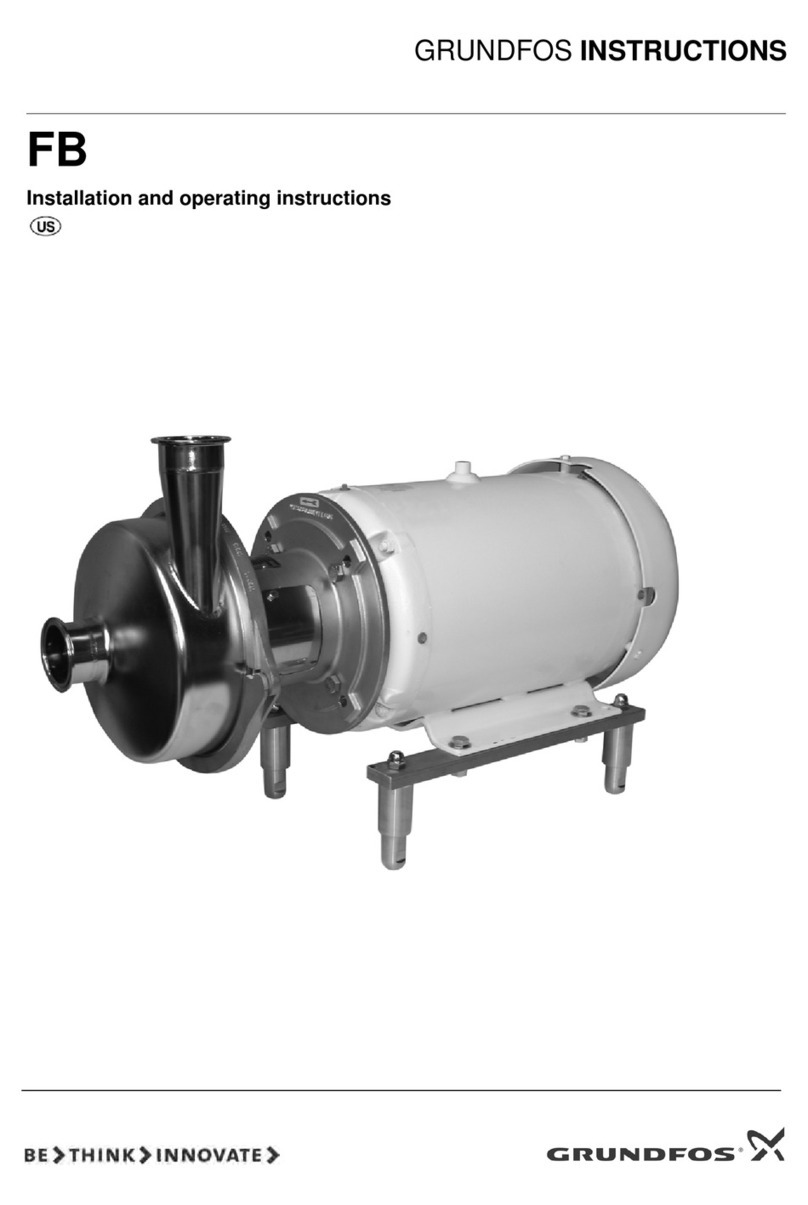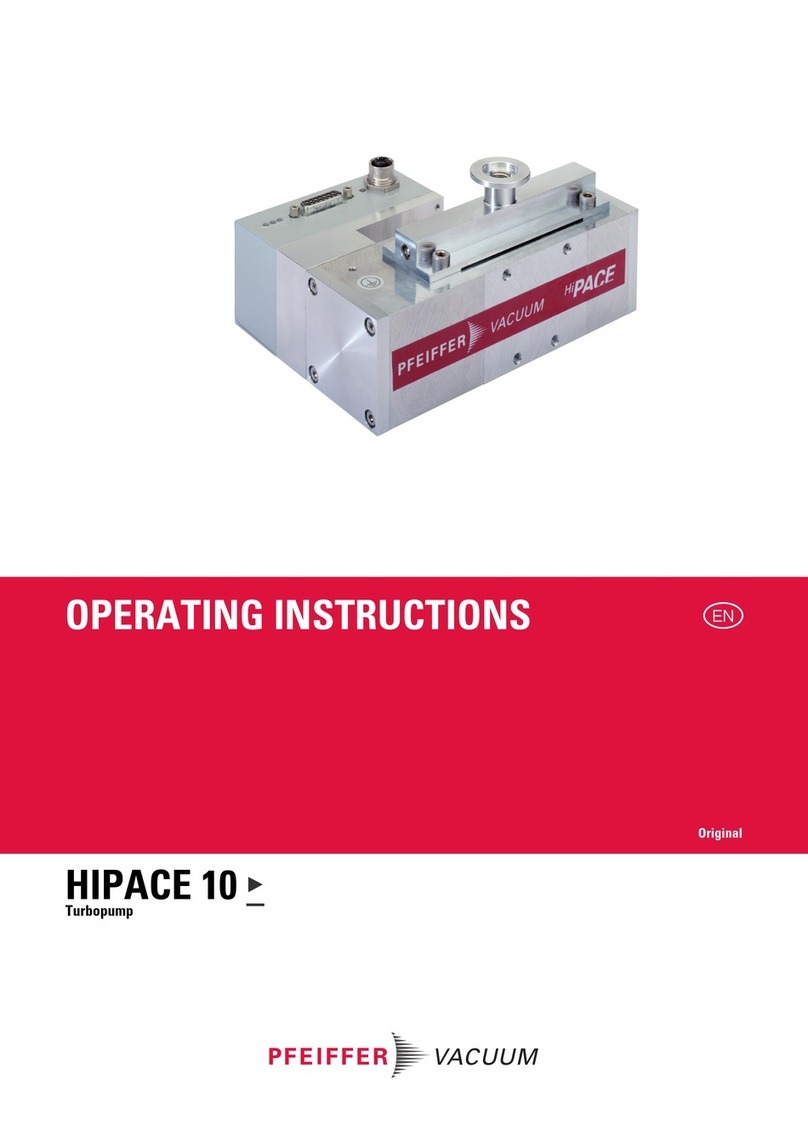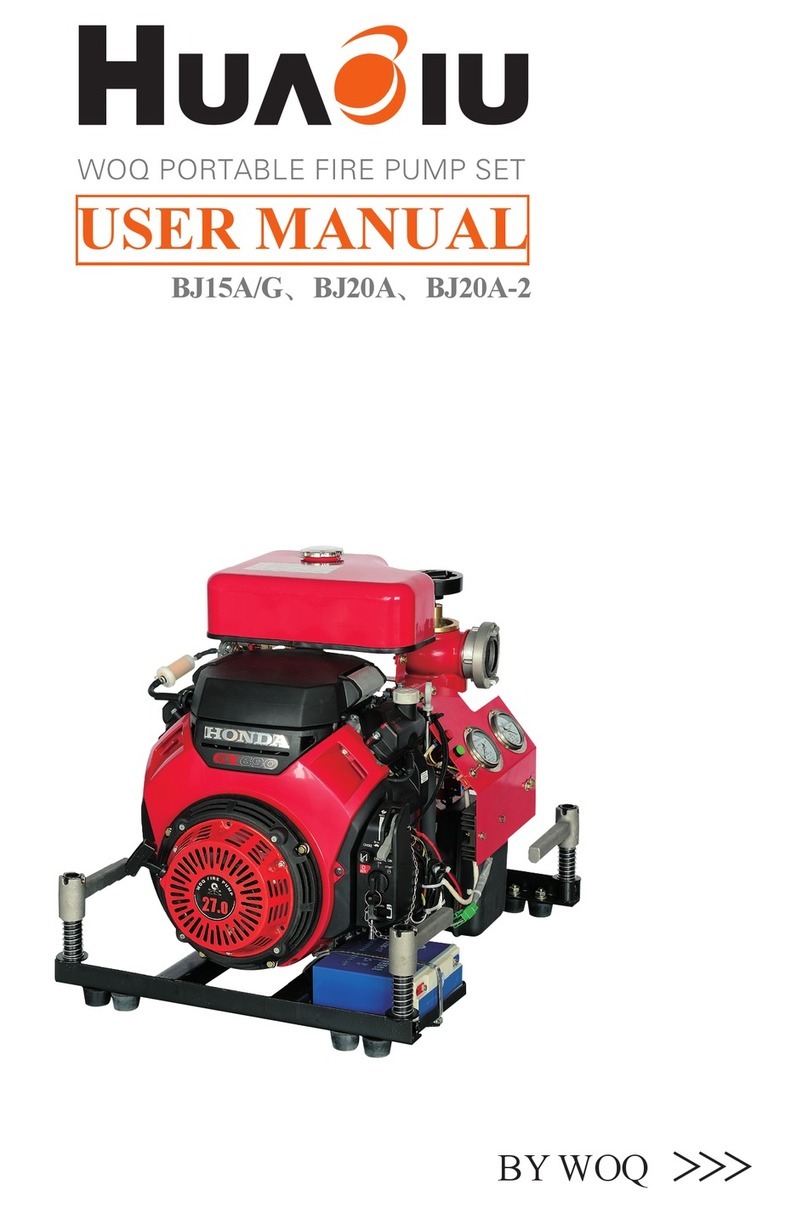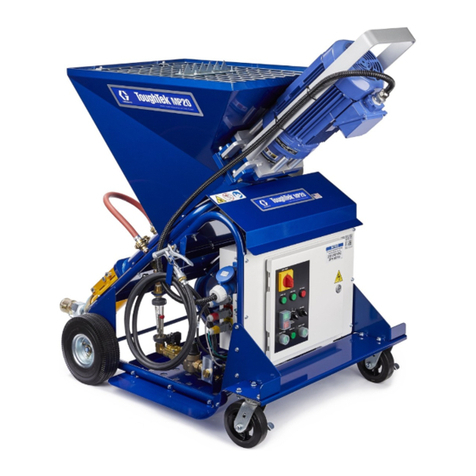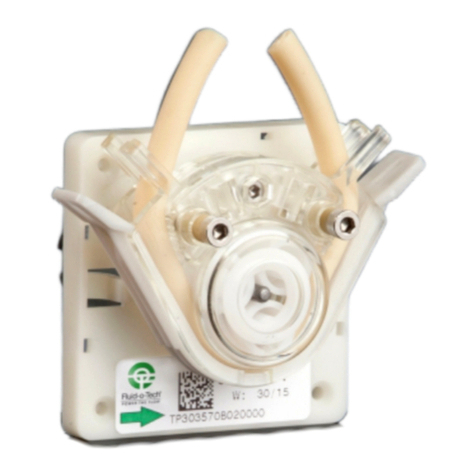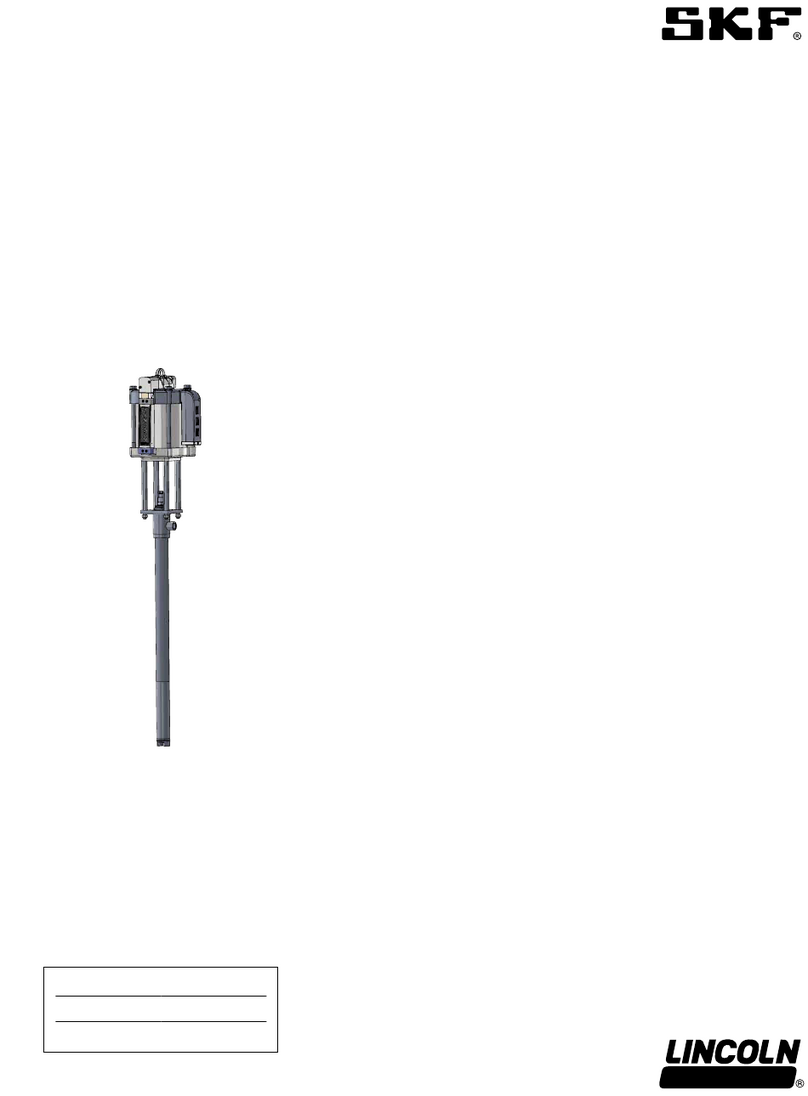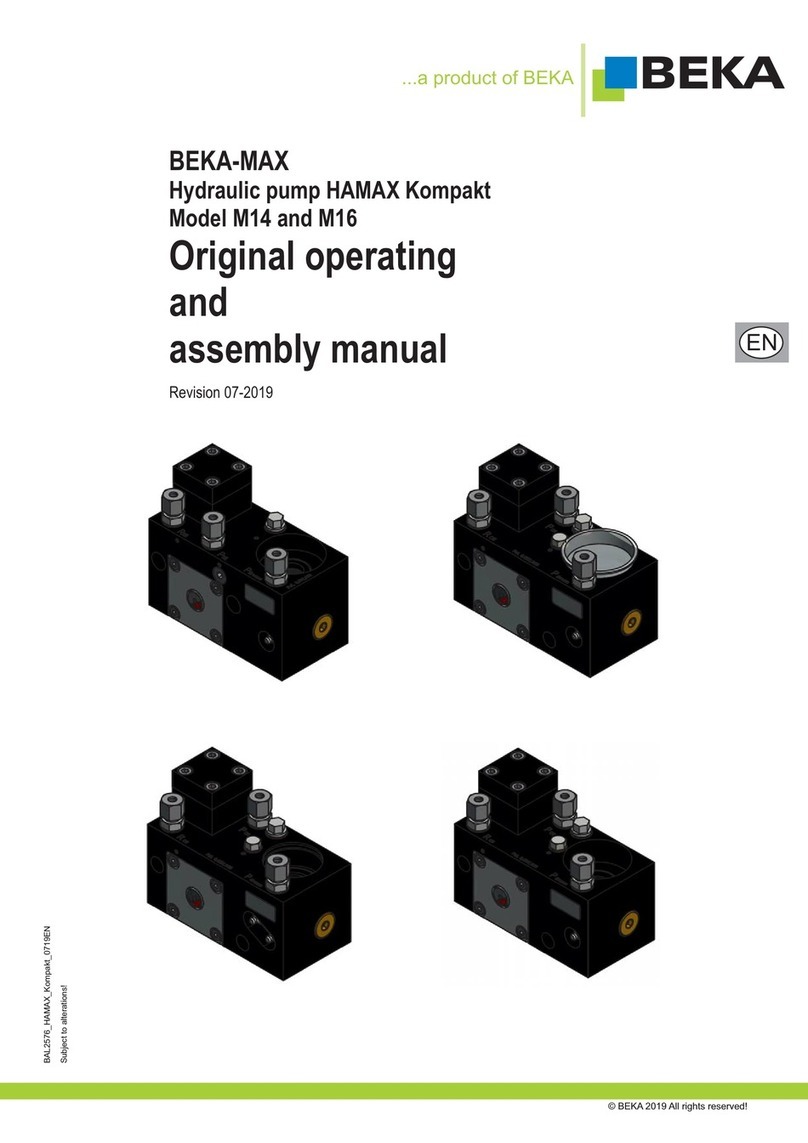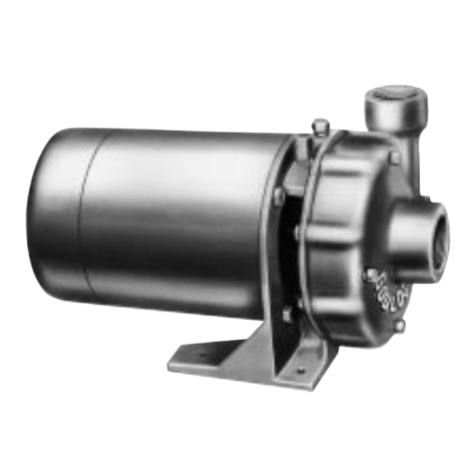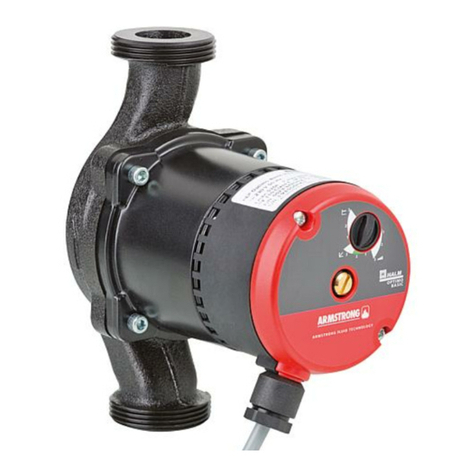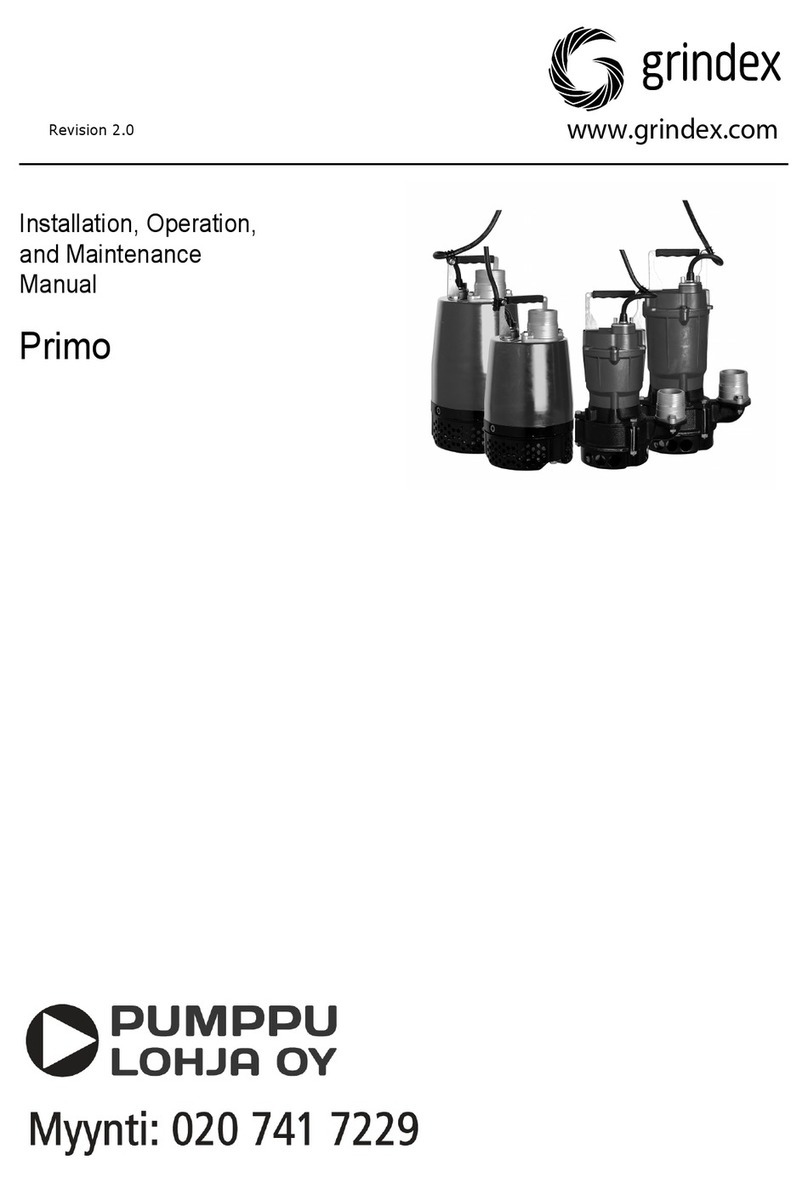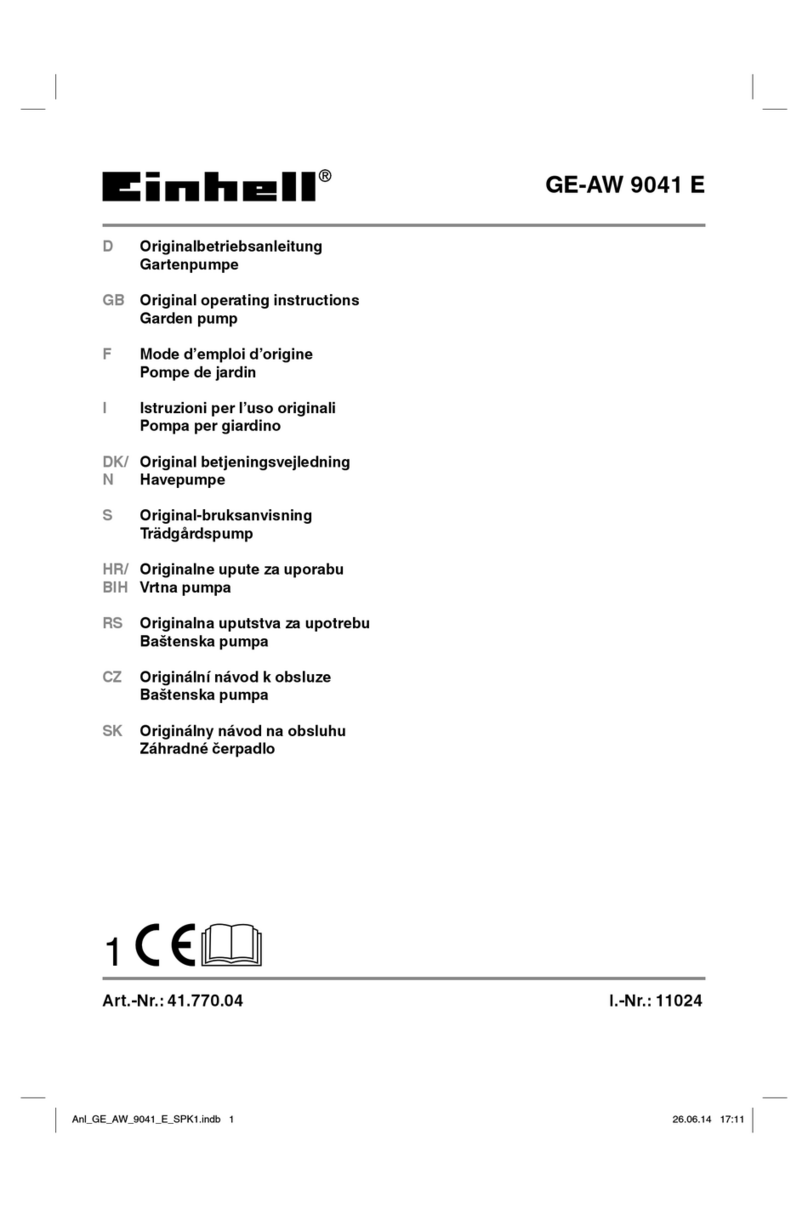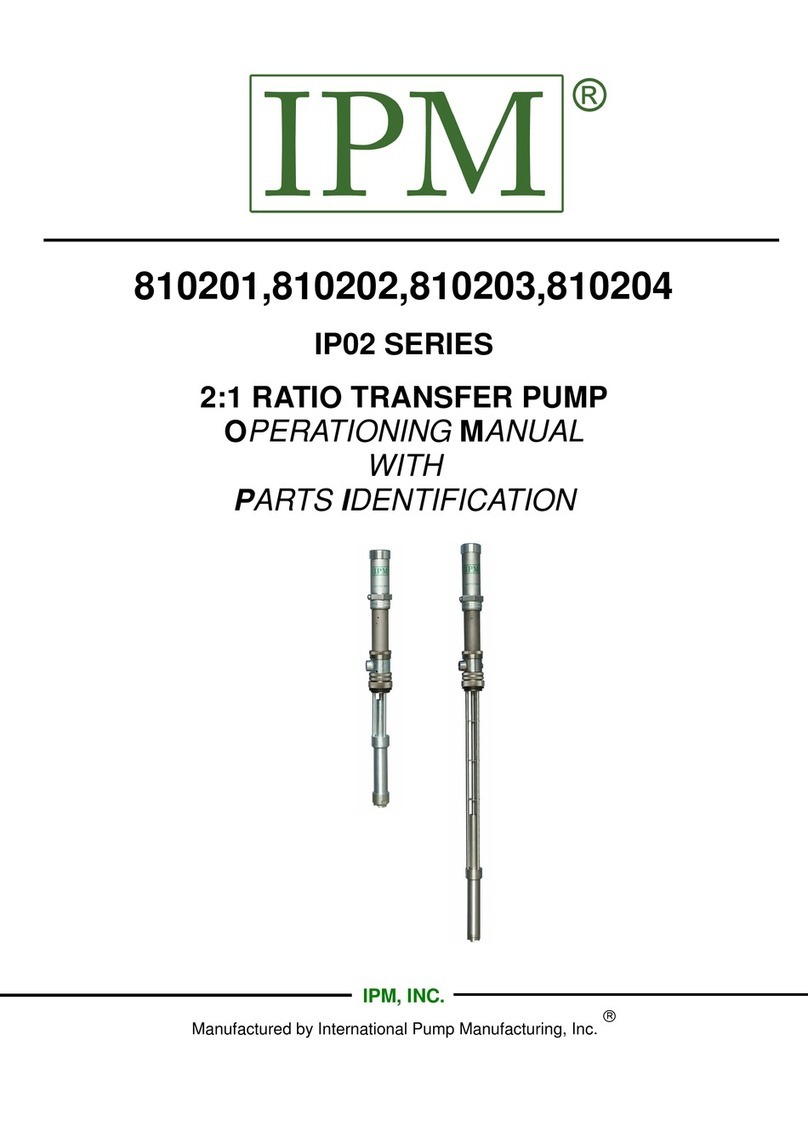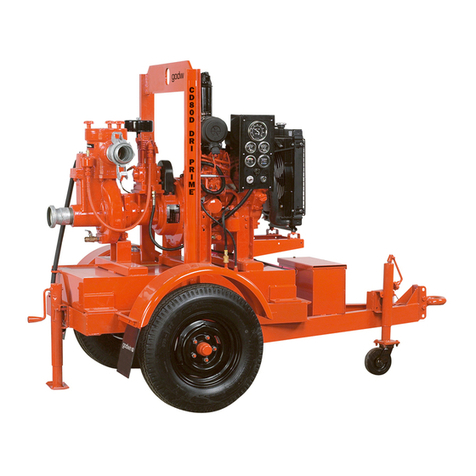OPERATORBook No.: 95-0014-0000/A
HANDBOOK Issue: 06
Page 18 of 30
7.4.2 Reassembly
New seals, O-rings and impeller retaining screw must be fitted when reassembling.
1. Heat the roller bearing inner race (part of 24) and both angular contact ball bearings (2 off 25) with a temperature
controlled bearing heater until they are a consistent 110°C. Do not overheat or allow the bearings to remain at this
temperature for longer than their fitting time.
CAUTION. Bearing races must be pressed into position and not hammered either directly or by drift. Direct
hammering will damage the bearing or rollers. Drift hammering will introduce swarf into the assembly. Either will
result in early bearing failure.
2. Once up to temperature, slide the roller bearing inner race up hard against the shaft shoulder, fit the bearing spacer
(28) and slide the angular contact ball bearings up hard onto the other shaft shoulder. Hold them in position for a
minimum of 30 seconds. The lock nuts (27) fitted without the tab washers are suitable for this purpose. This allows
the races to grip the shaft and prevent them from creeping away from the shoulder during cooling. Let the assembly
cool completely.
3. Once cool, remove the lock nuts (27), fit the locking washers (26) and refit the lock nuts. Knock up at least two tags
on the locking washers to secure.
4. Press the roller bearing outer race (part of 24) into the bearing bracket (20) leaving it about 1mm proud of the end. Fit
the bearing cover (21) with 6 off screws and spring washers (58 & 72). Tighten evenly until the cover is flat and
square against the bearing outer race. Continue tightening half a turn at a time and press the outer race fully home.
5. Press the shaft assembly into the bearing bracket from the motor end until it is clamped hard together.
6. Fit O–ring (44) to motor end bearing cover (22). Attach cover to the bearing bracket with cap head screws and spring
washers (60 & 73).
7. Fit filler elbow (85) and plug (52) to bearing cover (22) ensuring fill will be vertical when pump is fully assembled.
8. Take adaptor (8) and fit filler elbow, extension pipe, socket and plug (85, 86, 87 & 52). Ensure fill will be vertical when
pump is fully assembled. Fit 2 off drain plugs (51).
9. Press the outboard seal seat (14) into the carrier (11). Fit the O-ring (40) to the carrier and secure into the adaptor (8)
using 4 off socket cap screws and washers (55 & 70).
10. Fit the O-ring (37) to the top face of the adaptor (8). Orientate the adaptor correctly in relation to the bearing bracket
assembly so that the oil filler assembly will pass through the hole in the bearing bracket and secure them together
with 8 off bolts, nuts and spring washers (63, 74 & 81).
11. Press the inboard seal seat (12) into the carrier (4) and secure with the seal clamp ring (7) held by 4 off screws and
spring washers (57 & 71).
12. Fit the one piece double mechanical seal (13) over the shaft ensuring that the seal faces meet and the seal sleeve is
butted against the shaft shoulder.
13. Place the O-ring (38) over the inboard seal carrier (4) spigot. Pass the carrier over the shaft taking care not to
damage the seal seat and locate it in the recess in the adaptor. Secure with 4 off cap headed screws (56).
NOTE: - The seal working lengths are obtained automatically and no setting is required.
14. Fit 6 off studs (66) to the rear wear plate (6). Position the rear wear plate and secure with 6 off nuts and spring
washers (80 & 72).
15. Press the roll pin (15) into the end of shaft (23).
16. Slide the impeller (3) onto the shaft. Temporarily fit the impeller washer (16) without an O-ring and secure with a
hand tight bolt. NOTE: - This bolt should not be the one used finally.
17. Measure the gap between the back of the impeller and the rear wear plate with feeler gauges at three positions 120°
apart. Rotate the impeller 60° and measure again. Average the readings. If it is already less than the tolerances
given in the Technical Data section, remove the impeller, add appropriate shims and refit.
18. If the hydraulic motor end of the shaft has two flats on the sides, an anti-rotation tool (available from Xylem
Dewatering Solutions) can be fitted for the following process. If the shaft is plane ended, then a baulk of timber
wedged across the impeller blades and against some suitably rigid structure will have to be employed.
19. Tighten the impeller bolt and recheck the clearance. If outside the given tolerance, remove the impeller and add or
remove shims (30, 31, 32) as appropriate.
20. Once the correct running clearance has been achieved, remove the fastening bolt and discard. Remove the impeller
washer and fit the O-ring (42) and roll pin (17). Replace the impeller washer, fit the tab washer (18) over the roll pin
and secure all in place with the bolt (64) torqued to the value in the Technical Data section.
21. Fit the O-ring (43) to the impeller washer and screw down the impeller washer cover (item 19 – 80 A/F) fully.
22. Remove the anti-rotation tool or wedge.
23. Place the pump body (1), suitably supported from its front cover mounting face so that it’s axis vertical. Fit 8 off studs
(81) to the adaptor face. Attach suitable lifting gear to the bearing bracket/adaptor assembly. Lift the assembly,
position it over the pump body, and orientate it so that the oil fillers are over the discharge trumpet and at right angles
to the flange. Lower it into position on the pump body. Secure with 8 off nuts and spring washers (81 & 74).
24. Rotate the assembly to the horizontal.
25. Fit 4 off studs (65) to the front wear plate (5).Attach the front wear plate to the front cover (20) using 4 off nuts and
spring washers (72 & 80).




















